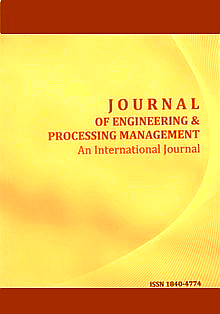SULFIDE OXIDATION IN TANNERY WASTEWATER WITH H2O2
Keywords:
hydrogen-peroxide, sulfide oxidation, COD, toxicity testsAbstract
High concentrations of sulfide in (cumulative) tannery wastewater are the direct cause of very high toxicity of this effluent. Therefore it is necessary to remove this pollutant by the oxidation process. Hydrogen-peroxide is the oxidizing agent, which increasingly acts as an "environment friendly" due to multiple uses for purification, detoxification and removal of odors from wastewater and waste gases. Wastewater treatment with H2O2 can be used as a separate procedure, or as an improvement of an existing mechanical or biological treatment processes. In conducted research, H2O2 was used for the oxidation of sulfide in samples of cumulative wastewater from processing of leather, after completion of gravitational sedimentation. The following parameters were varied: the concentration of H2O2, oxidation temperature and oxidation time. The achieved degree of oxidation of sulfide was 87,9-99,6 % at temperature t = 22 °C, with simultaneous reduction of COD values of 25-35 %. Verification of successful treatment of wastewater by hydrogen-peroxide was confirmed by toxicity tests on Daphnia magna. The results, expressed as 24-96hLC50, showed a significant decrease in toxicity, respectively treated wastewater was 100 times less toxic than the initial water samples.
Downloads
Published
How to Cite
Issue
Section
License
Copyright (c) 2012 Journal of Engineering & Processing Management

This work is licensed under a Creative Commons Attribution-NonCommercial-NoDerivatives 4.0 International License.


